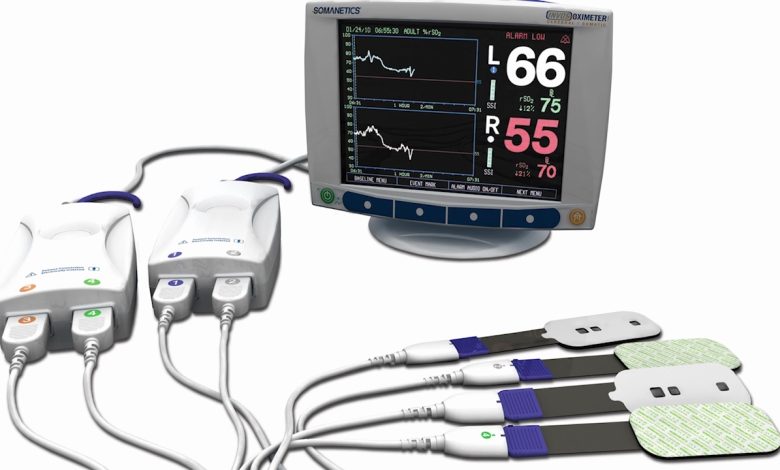Recent Trends in the Cerebral Oximeter Market

The anesthetic process’ principal goal is to keep organs and tissues, particularly the brain, supplied with enough oxygen. Despite the well-documented consequences of reduced oxygen flow and extended hypoxia to the brain, the brain is still the least studied organ during anesthesia. Cerebral oximeters use continuous, noninvasive near-infrared spectroscopy (NIRS) or near-infrared spectroscopy technology to get cerebral oxygenation measurements.
An oximeter probe is hooked to a wire, which is subsequently connected to the cerebral oximeter monitor in the cerebral oximeter setup. With their monitor cords, most cerebral oximeters can support 2 to 4 oximeter probes. Probes are adhered to a patient’s scalp with adhesive pads, with the frontal lobe being the preferred location. Fiber optic light sources and light detectors are combined in probes. The source emits light in the infrared spectrum, either by light-emitting diodes (LED) or stimulated emission of radiation.
The emitted light, which is in the infrared region, can readily penetrate the skull and reach the underlying cerebral tissue. The light is redirected, absorbed, reflected, or scattered after it is emitted. When infrared light collides with hemoglobin, it causes a shift in the light spectrum. The oxygenation condition of the hemoglobin molecule determines the change. When the reflected light returns to the surface, the light detectors in the oximeter probes detect it.
Various recent trends being analyzed in the Cerebral Oximeter market are :
- Growth Factors: The global cerebral oximeter market is expected to develop due to factors such as an aging population, an increase in the prevalence and incidence of neurological disorders, and a steady increase in awareness of neurodegenerative diseases.
Furthermore, the market is growing due to an increase in the occurrence of traumatic brain injuries and manufacturers’ continued attempts to bring technological breakthroughs to the equipment. Because there is a large untreated population of people with neurological diseases, as well as a surge in desire for minimally invasive and non-invasive devices, demand for these devices may increase.
- Market Segmentation: The global cerebral oximeters market is divided into product types, therapeutic applications, end-users, and geographical segments. Portable oximeters and finger oximeters are the two types of oximeters on the market. The market is divided into three categories based on therapeutic application: traumatic brain injuries, stroke, and other therapeutic uses. The market is segmented into hospitals, clinics, diagnostic centers, and other end-users. Besides, the drug discovery outsourcing market report heavily emphasizes market segmentation.
- Regional Trends: North America, Europe, Asia Pacific, Latin America, and the Middle East, and Africa make up the global cerebral oximeters market. The market is likely to be dominated by North America. In terms of market size, North America is followed by Europe. The market in the Asia Pacific is predicted to grow due to improvements in healthcare infrastructure, rising disposable incomes, and growth in the incidence of neurodegenerative illnesses, as well as government-led healthcare reforms.
The article provides an in-depth study of the market’s drivers and restraints. The key trends defining the market’s trajectory have been explored by analysts. It provides a thorough examination of market competition, regional expansion, competitive landscape . And market segmentation by type, application, and geography, all of which are backed up by precise market data.






